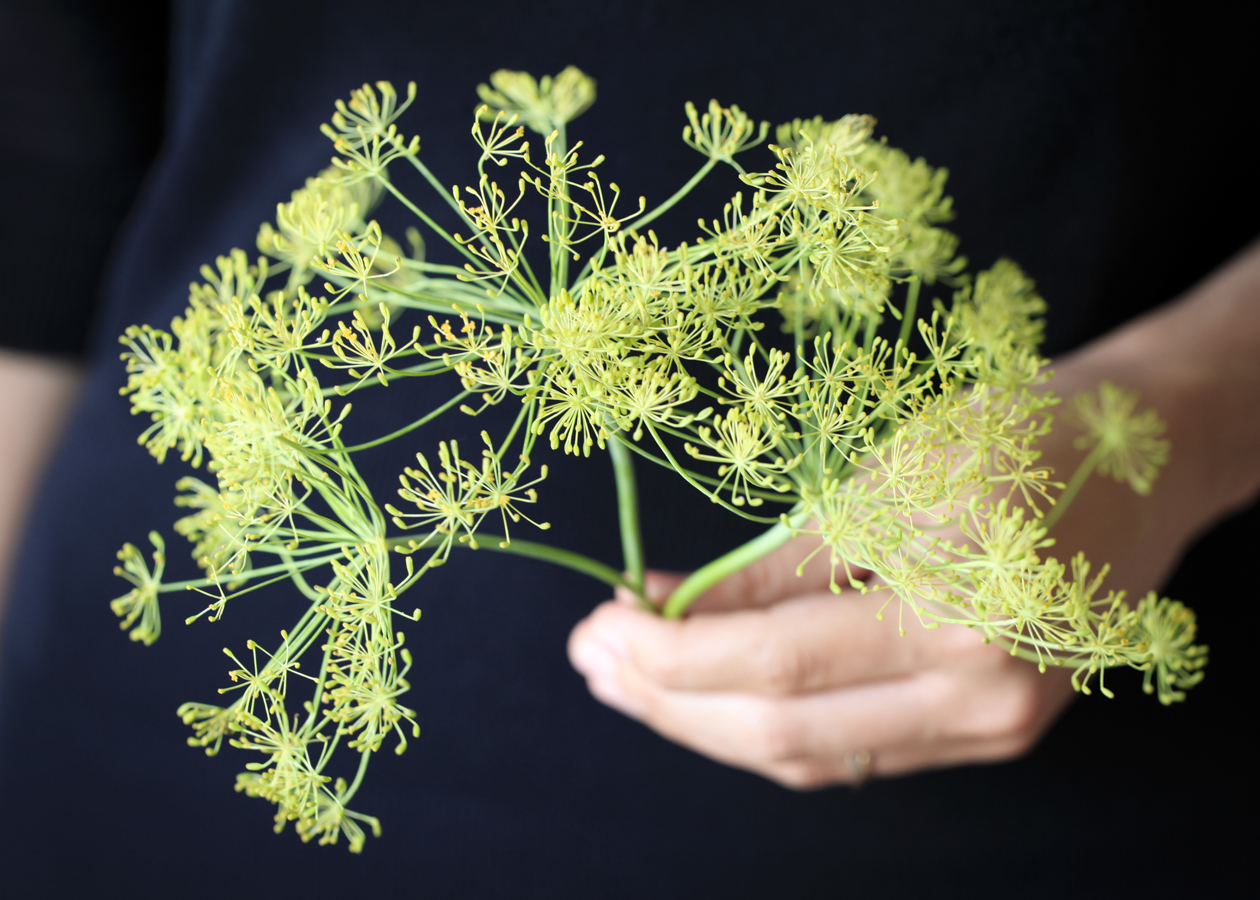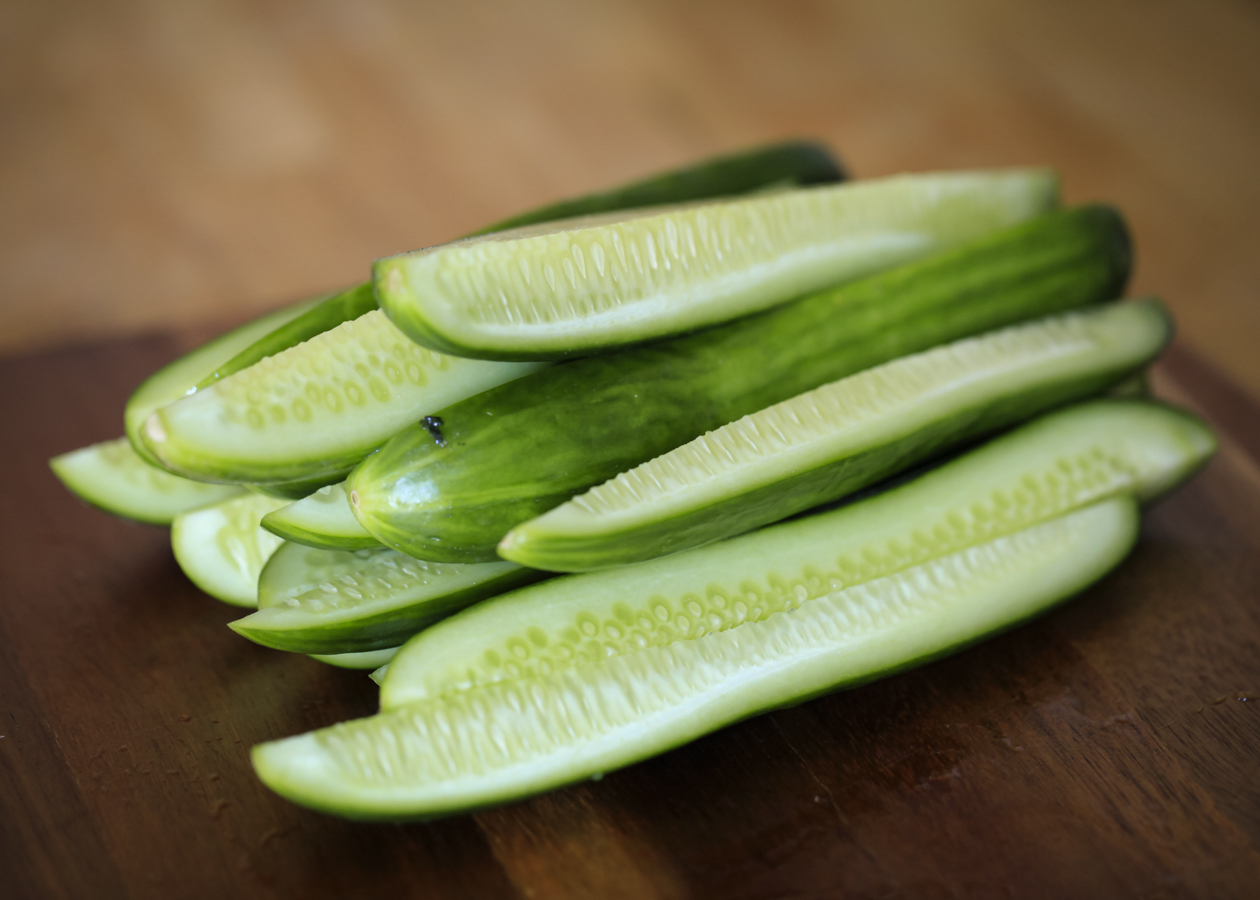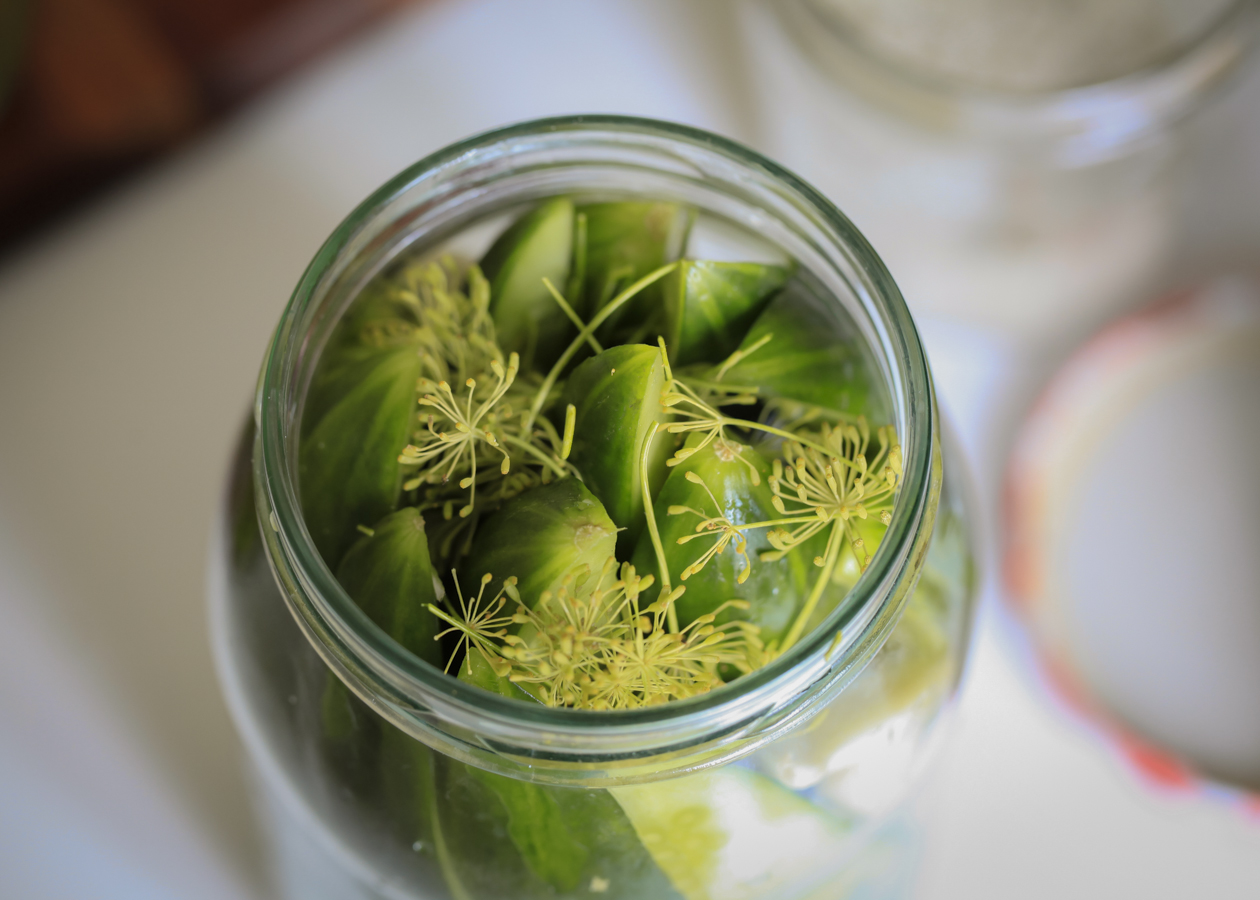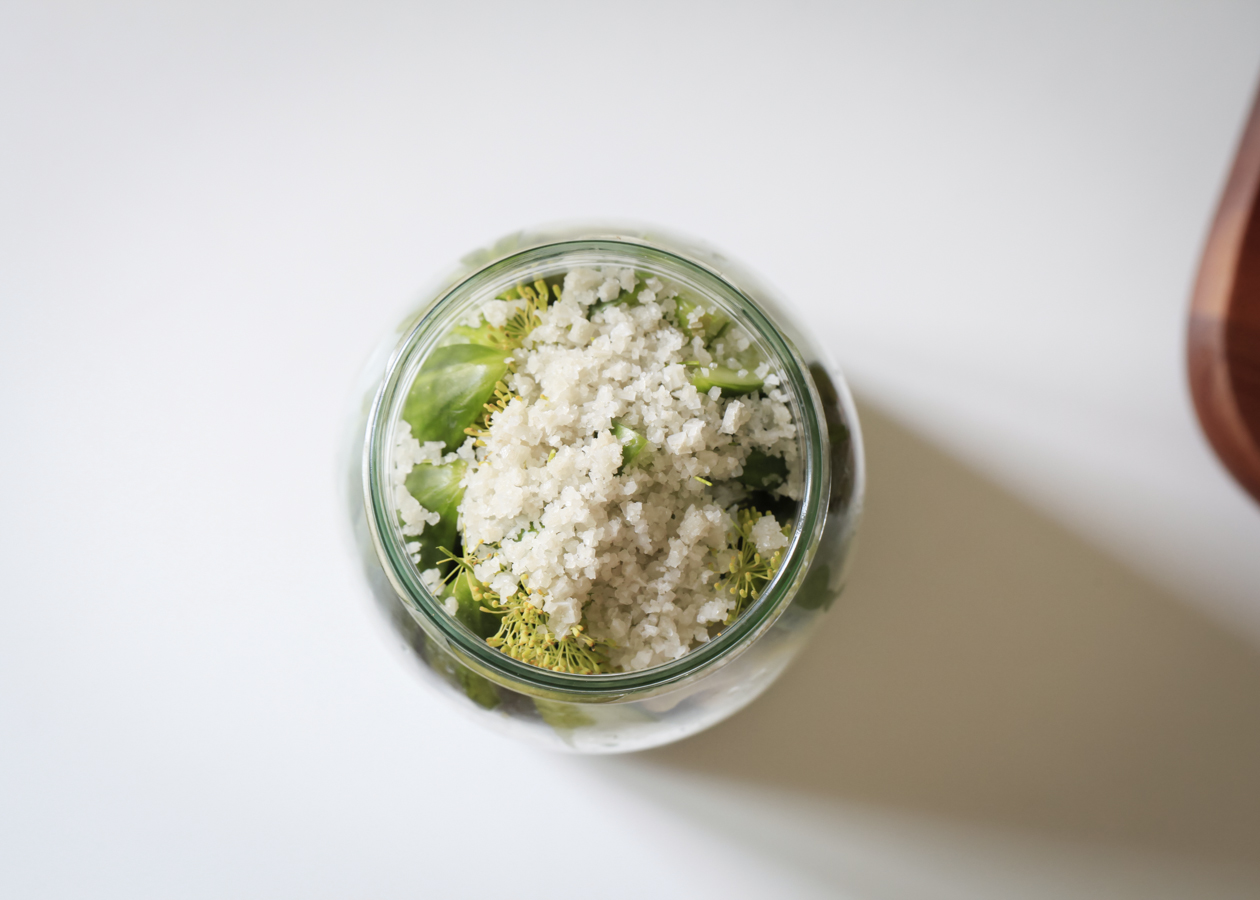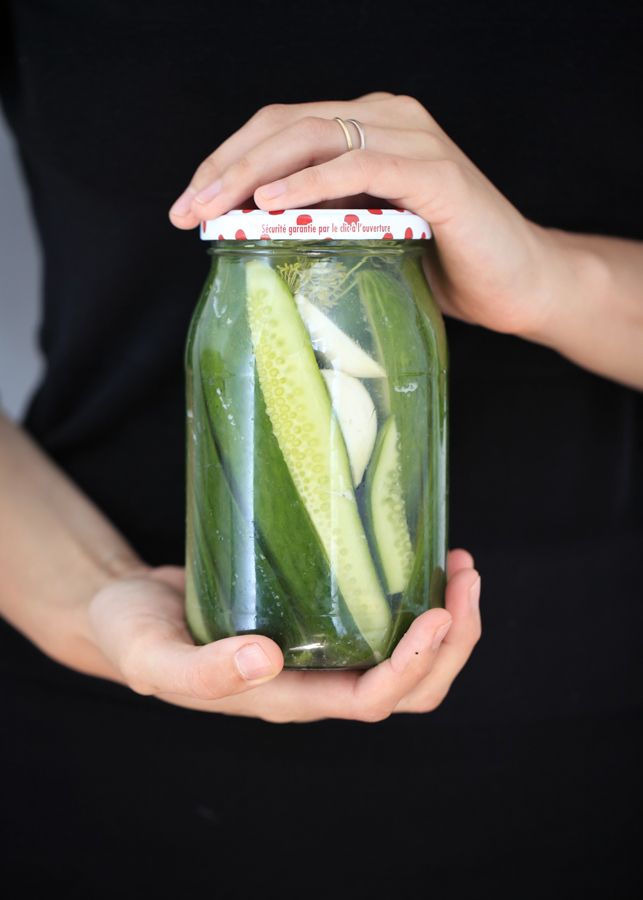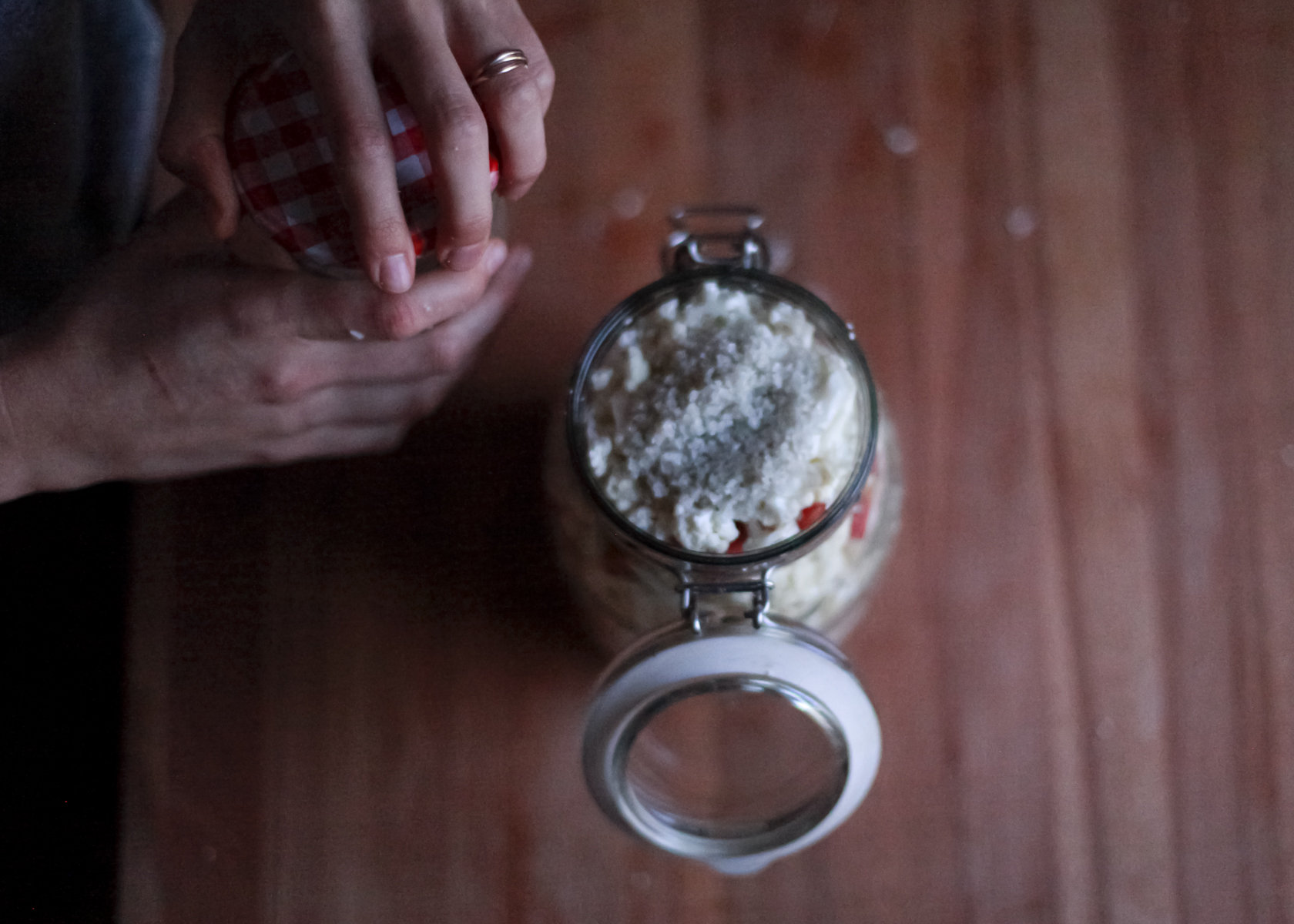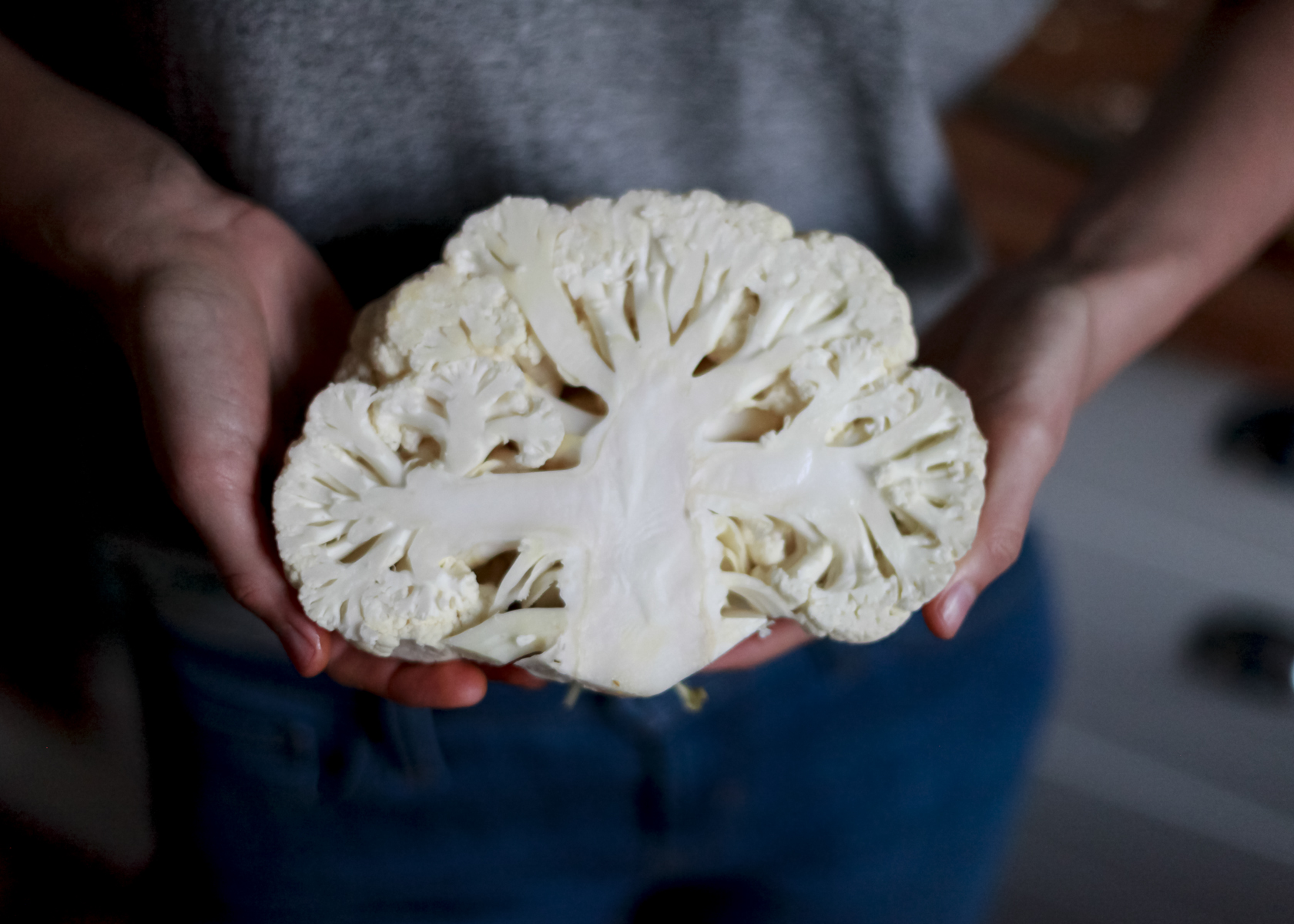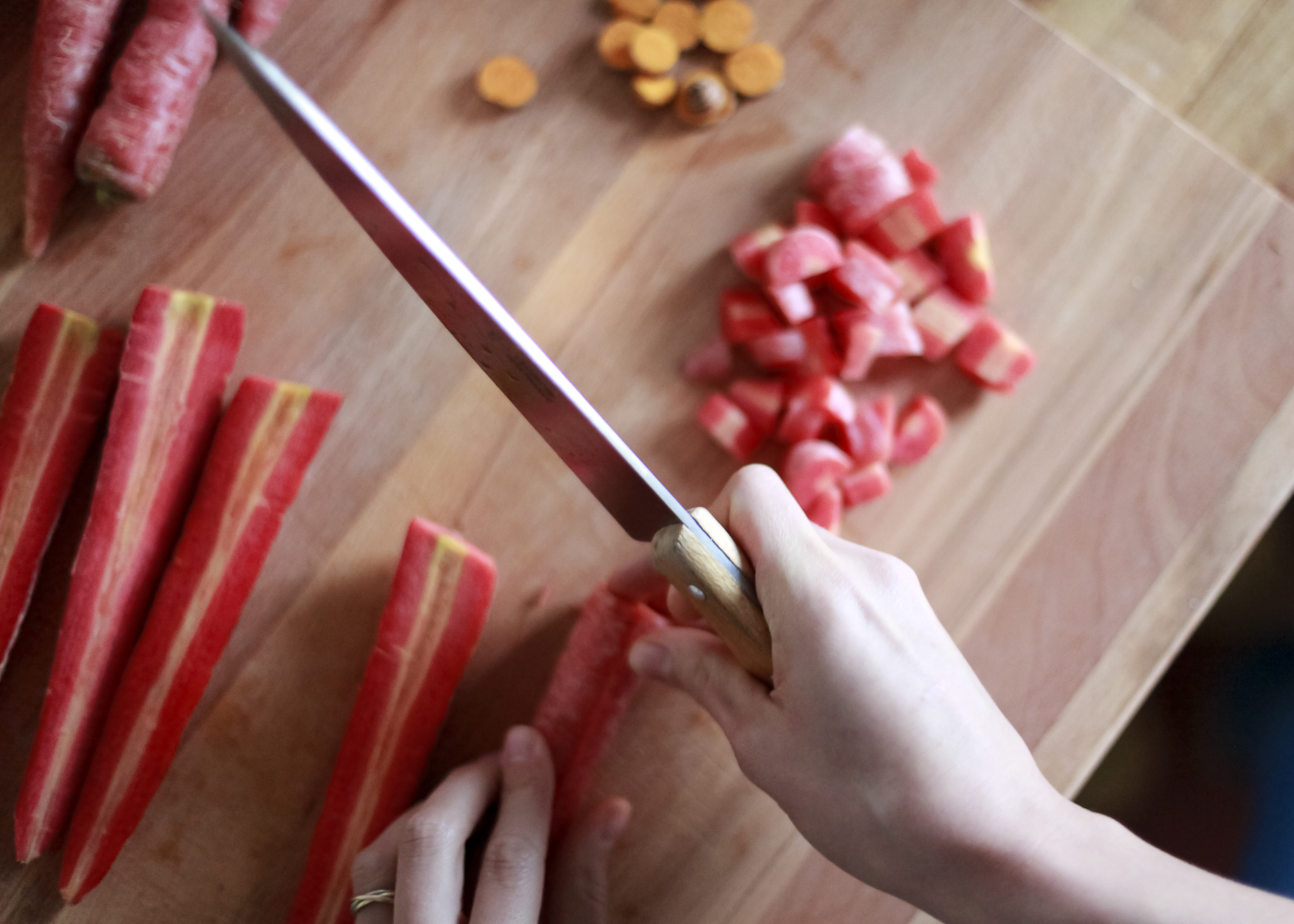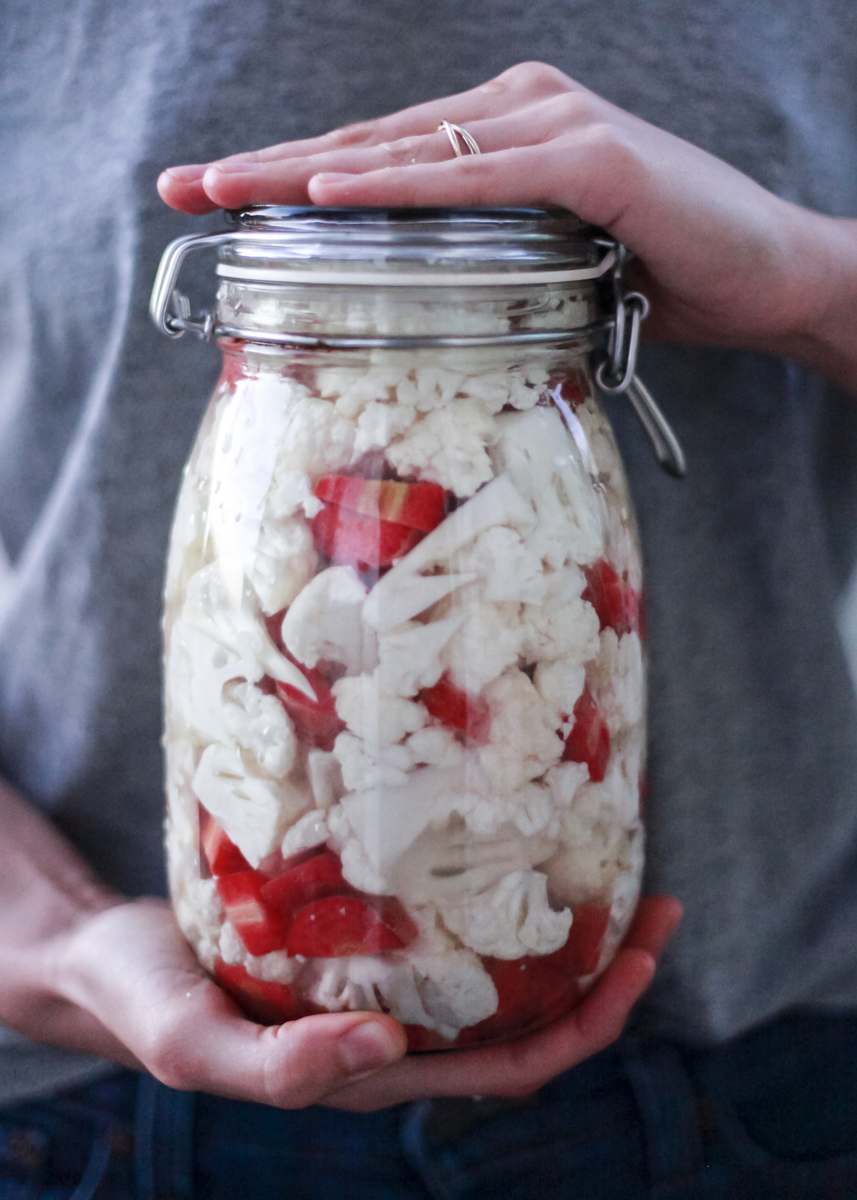It’s my belief that most things in life–health, sexuality, political ideology, spiritual inclination–can be found not within binary but somewhere along a spectrum, even things as seemingly simple as, say, pickles.
Go into any old-timey Jewish deli and you’ll see what I mean. There on the counter near the register you’ll find two, often three great big glass jars of cucumber pickles: half-sours, sours, double-sours all suspended in murky brine. The sour pickle spectrum.
I, personally, like my pickles sour as can be. Blame it on adrenal fatigue (and the subsequent craving for salt), blame it on a vata-imbalance and a constant need for grounding, blame it on my Iraqi heritage (my dad has this endearing habit of linking my love for any vaguely middle-eastern food–olives, pistachios, figs–to this), while you’re at it, blame it on my Polish/Ukrainian heritage or my Jewish heritage for that matter (I love how the boundaries between what is traditionally “Jewish” food and what is traditionally “Slavic” are so beautifully blurry), any way you slice it, there’s no denying that I fall on the extreme end of the spectrum.
And not to make other versions of pickles feel less than, but if I’m being completely honest the classic cucumber pickle is my pickle of choice. It’s one of those foods that has made its way onto the plates of such seemingly disparate cultures: the bowl of sour pickle soup from Poland, the sour pickles served with timman from Iraq, the smoked-meat sandwich w/ a side of sour pickles from Montreal, the triple-cheeseburger with extra pickles from the U.S. of A.
It’s a food that transcends borders. One that feels familiar, conjures up some sense of nostalgia no matter what your cultural heritage (or ayurvedic dosha, for that matter). It’s a food that, for me, signals the start of deep Summer when days are long and spent submerged in grass, or lake, or hammock beneath stretched hours of sun. I find this kind of food-nostalgia, “comfort” food in the truest sense, to be deeply nourishing, chicken soup for the soul.
And, when made traditionally through the process of lacto-fermentation (using just salt, water and time), it’s a food that is brimming with probiotics, or the beneficial bacteria that hang out and help out in our intestines strengthening not only our digestive health, but our immune health, our mental health. As my Ethnobotany professor used to say whenever a medicinal plant also happened to taste delicious, bonus!
Deep Summer means jars of pickles with varying degrees of sourness fermenting in my cupboard for various lengths of time. Waiting to be crunched into alongside BLT or leg of oven-fried chicken or diced into egg-salad.
The two main factors that affect the sourness of cucumber pickles are:
- The amount of salt added (more salt = more sour)
- The amount of time (more time = more sour)
This week I’m sharing my method for medium-sour pickles. I invite you to experiment this Summer and see where you fall on the spectrum!
Sour Pickles
Ingredients
2 and 1/2 heaping tablespoons sun-dried sea-salt (like Celtic sea-salt)
4 or 5 cucumbers
3 cloves garlic, peeled
couple stems flowering dill
Directions
- Sterilize a quart canning jar by filling with boiling water.
- Slice cucumbers into wedges. Drain water from jar and let cool. Pack jar with cukes, garlic and dill, until jar is completely full.
- Add salt. Fill jar to the top with cold, non-chlorinated water. Seal and shake to distribute salt.
- Leave in a cool, dark place for at least 3 days. (I like to ferment medium sours for 5 days). (You can ferment these babies for months and months, BTW).
- After opening pickles, store in fridge.
